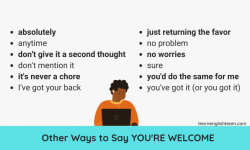50 Business English Phrases You Can Actually Use at Work
English in the workplace doesn’t have to be scary. Over the years teaching and coaching professionals at BestKru English, I’ve noticed many get stuck not because they can’t speak, but because they don’t have the right phrases at their fingertips. To help you, I’ve compiled 50 practical business English phrases, from beginner to advanced, each with a quick explanation so you know exactly when and how to use them.
The Essentials for Beginners

These are your foundational phrases. Master them, and you’ll handle most daily situations with confidence.
Could you please clarify that?
Meaning: I don’t fully understand. Please explain it in a different way.
When to use: When someone uses a complex term or you miss a key detail. It’s much more professional than saying “What?” or “I don’t understand.”
Let me rephrase that.
Meaning: I will say it in a different way to make it clearer.
When to use: When you see confused faces in the room after you’ve spoken. It shows you are aware of your audience.
What are your thoughts on this?
Meaning: What is your opinion?
When to use: To invite others into the conversation and show you value their input.
I’d like to suggest…
Meaning: Here is my idea.
When to use: A polite and professional way to introduce your own proposal or solution.
To summarize…
Meaning: I will state the main points again, briefly.
When to use: At the end of a discussion or meeting to make sure everyone understands the key outcomes.
What are the next steps?
Meaning: What should we do now?
When to use: To move a conversation from discussion to action. It shows you are results-oriented.
I’m sorry, I didn’t catch that.
Meaning: I didn’t hear you clearly.
When to use: In a call with a bad connection or when someone speaks too quickly.
Could you spell that out for me?
Meaning: Please tell me the letters of the word.
When to use: For names, email addresses, or specific terms you need to write down correctly.
I agree with [Name].
Meaning: My opinion is the same as [Name]’s.
When to use: To show support for a colleague’s point and build consensus.
I have a slightly different perspective.
Meaning: I disagree, but I want to be polite.
When to use: A soft and respectful way to introduce a counter-argument without being confrontational.
Let’s touch base next week.
Meaning: Let’s have a short meeting or conversation next week.
When to use: To schedule a future follow-up without setting a specific time at that moment.
I’m working on it.
Meaning: I have started the task and am making progress.
When to use: As a simple status update to your manager or a colleague.
What’s the deadline for this?
Meaning: When does this need to be finished?
When to use: To clarify expectations and manage your time effectively.
Please keep me in the loop.
Meaning: Please keep me updated with any new information.
When to use: When you need to be informed about the progress of a task you are not directly working on.
I’ll get back to you on that.
Meaning: I don’t know the answer right now, but I will find it and tell you later.
When to use: A great phrase to use when you need time to check information. It makes you sound responsible, not ignorant.
Thank you for your time.
Meaning: A polite way to end a conversation or meeting.
When to use: Always a good way to show respect for others’ schedules.
Can I ask a quick question?
Meaning: I want to ask something.
When to use: A polite way to interrupt or start a new topic without being rude.
The key takeaway is…
Meaning: The most important point is…
When to use: When you want to emphasize the main message of a presentation or discussion.
I’m afraid I have to disagree.
Meaning: I do not agree.
When to use: A more direct but still polite way to state your disagreement.
Let’s move on.
Meaning: Let’s start discussing the next topic.
When to use: When a discussion is going too long or is no longer productive.
For Advanced Learners – Level Up Your Language
You have the basics. Now, let’s add some phrases that show a deeper understanding of business culture and make you sound more like a native speaker.
Let’s circle back to that.
Meaning: Let’s return to this topic later.
When to use: When a point is important but not relevant to the current discussion. It acknowledges the point without derailing the meeting.
To piggyback on what [Name] said…
Meaning: I want to add something that is connected to what [Name] just said.
When to use: A smooth way to build on someone else’s idea and show you are listening actively.
Let’s take this offline.
Meaning: Let’s discuss this in a smaller group or privately after the meeting.
When to use: When a conversation gets too detailed for the entire audience or is only relevant to a few people. It’s a classic for keeping meetings on track.
What’s the ballpark figure?
Meaning: What is the approximate cost or number?
When to use: When you need a rough estimate, not an exact, detailed calculation.
Let’s get the ball rolling.
Meaning: Let’s start the project or task.
When to use: At the beginning of a new initiative to motivate action.
My two cents…
Meaning: Here is my opinion, which I offer humbly.
When to use: A casual and modest way to share your opinion without sounding too forceful.
We need to manage expectations.
Meaning: We need to be realistic about what we can achieve and communicate that clearly.
When to use: When a project’s goals might be too ambitious or a client is asking for too much.
Let’s drill down into the details.
Meaning: Let’s examine this topic in much more detail.
When to use: When you move from a high-level overview to a deep, specific analysis.
It’s on my radar.
Meaning: I am aware of this issue, but I am not actively working on it yet.
When to use: To acknowledge a task or problem that you will address in the future.
What’s the bandwidth for this?
Meaning: Do we/you have the time, energy, or capacity to do this work?
When to use: A metaphorical way to ask about a person’s or team’s availability.
Let’s not reinvent the wheel.
Meaning: Let’s use an existing solution instead of creating a new one from scratch.
When to use: To promote efficiency and avoid redundant work.
That’s a good point, but have we considered…
Meaning: A sophisticated way to disagree or offer an alternative.
When to use: It validates the other person’s idea first before introducing your own, which makes them more receptive.
We’re aligned on this.
Meaning: We are in agreement.
When to use: A corporate way to confirm that everyone shares the same understanding or goal.
Let’s table this for now.
Meaning: Let’s postpone the discussion of this topic until a later time.
When to use: When you want to stop a discussion, perhaps because there isn’t enough information or time.
What are the deliverables?
Meaning: What are the tangible things we must produce for this project?
When to use: To clarify the specific outputs or results expected from a task.
He/She has a steep learning curve.
Meaning: He/she has to learn a lot of new things very quickly.
When to use: To describe a challenging new role or task for a new employee.
This is a game-changer.
Meaning: This idea or product will completely change the situation.
When to use: To describe something with a massive, positive impact.
Let’s think outside the box.
Meaning: Let’s think in a new, creative, and unconventional way.
When to use: During brainstorming sessions to encourage innovative ideas.
We need more granularity.
Meaning: We need more detail.
When to use: When a plan or report is too high-level and you need a more detailed breakdown.
This is our bread and butter.
Meaning: This is the core product or service that generates most of our company’s revenue.
When to use: To describe the central, most reliable part of your business.
He’s a key stakeholder.
Meaning: He is a very important person with a strong interest in the project’s success.
When to use: To identify critical people whose opinions and approval you need.
Let’s leverage our assets.
Meaning: Let’s use our existing resources and strengths to our best advantage.
When to use: In strategic discussions about how to achieve a goal most effectively.
It’s a low-hanging fruit.
Meaning: It’s the easiest and quickest task to complete to get a positive result.
When to use: When prioritizing tasks, you might suggest tackling the “low-hanging fruit” first for an easy win.
We need to get buy-in from the team.
Meaning: We need to get the team’s agreement and support for this decision.
When to use: Before implementing a new idea, especially one that affects many people.
That’s not in my wheelhouse.
Meaning: That is not my area of expertise.
When to use: A polite and slightly informal way to say you are not the right person for a specific task.
Due diligence.
Meaning: The necessary research and investigation you do before making a business decision (e.g., before a merger or partnership).
When to use: In a formal context to describe the process of careful investigation. “We need to do our due diligence.”
Let’s sync up.
Meaning: Let’s synchronize our information; let’s meet and make sure we are all on the same page.
When to use: A modern, slightly more tech-y way to say “Let’s touch base.”
There’s a lot to unpack here.
Meaning: This is a complex issue with many different parts to consider.
When to use: When presented with a complicated problem or situation that requires careful analysis.
At the end of the day…
Meaning: Ultimately; in the end; the most important thing is…
When to use: To conclude an argument or discussion by stating the final, most important point.
What’s the action plan?
Meaning: What are the specific, concrete steps we will take to achieve our goal?
When to use: A more direct and action-focused version of “What are the next steps?”
There you have it. My advice? Don’t try to memorize all 50 at once. Pick three or four this week that you think you can use. Write them down. Practice saying them. Then, try one in your next meeting or email.
Confidence comes from practice, not perfection. Keep learning, keep speaking, and you will see how far you can go.
Kamonwan Achjanis is the co-founder of BestKru, one of the largest EdTech companies in Thailand. She is working with hundreds of private teachers and tutors, advising them on how to improve the quality of teaching. Being involved in development of several education software projects, she has deep expertise in EdTech and teaching online.



